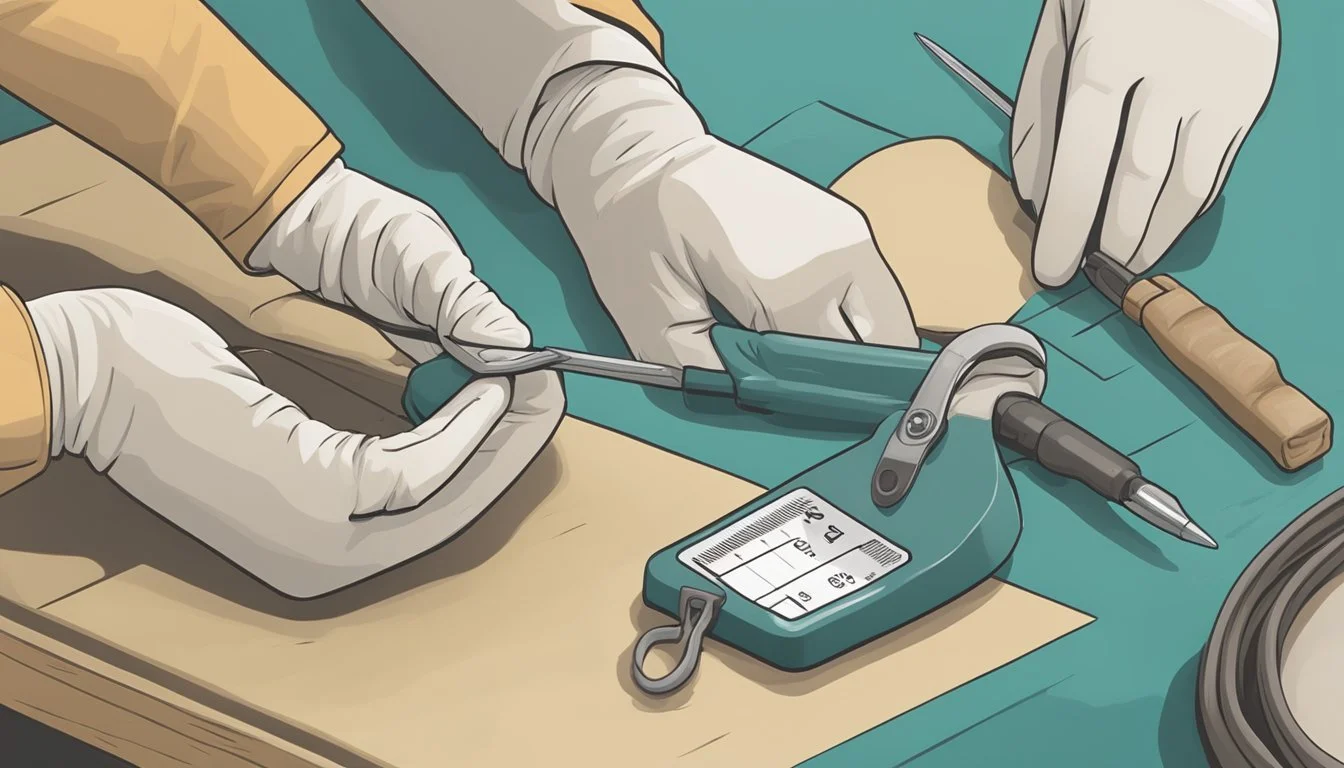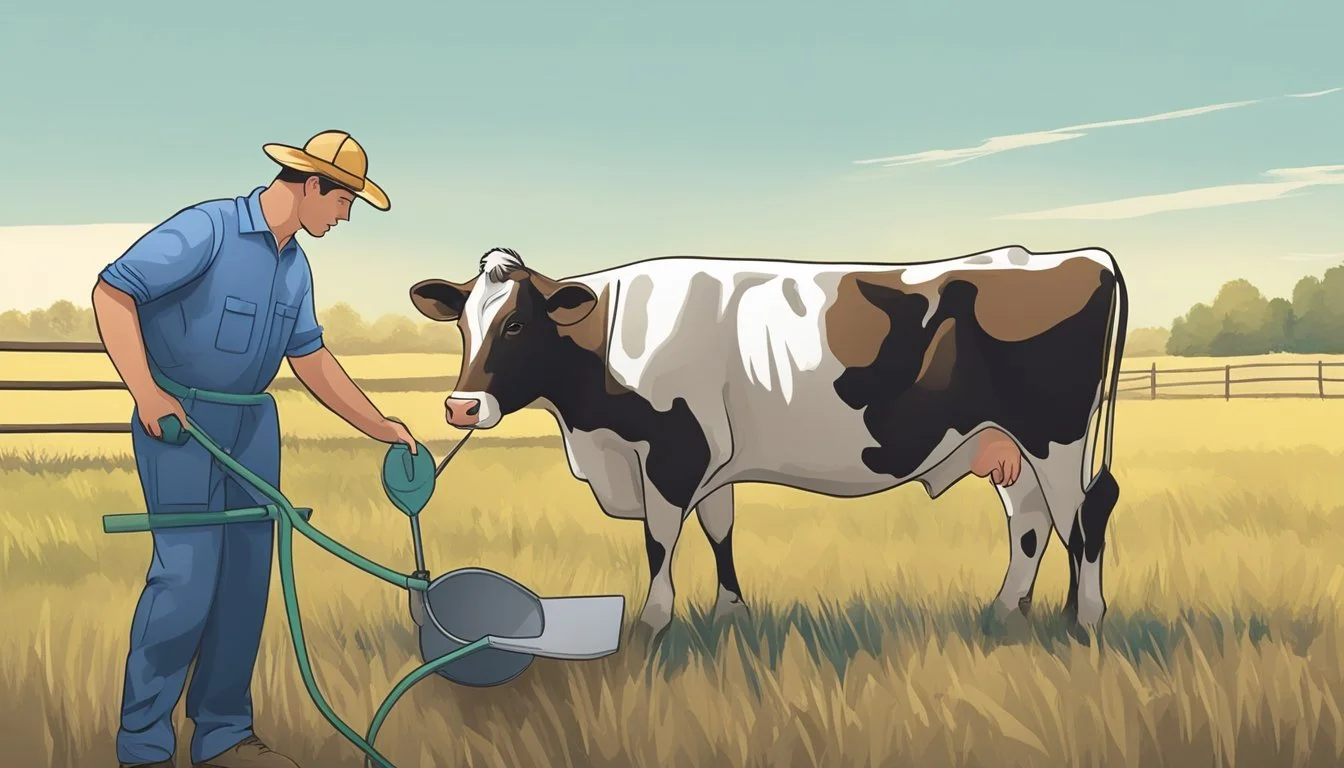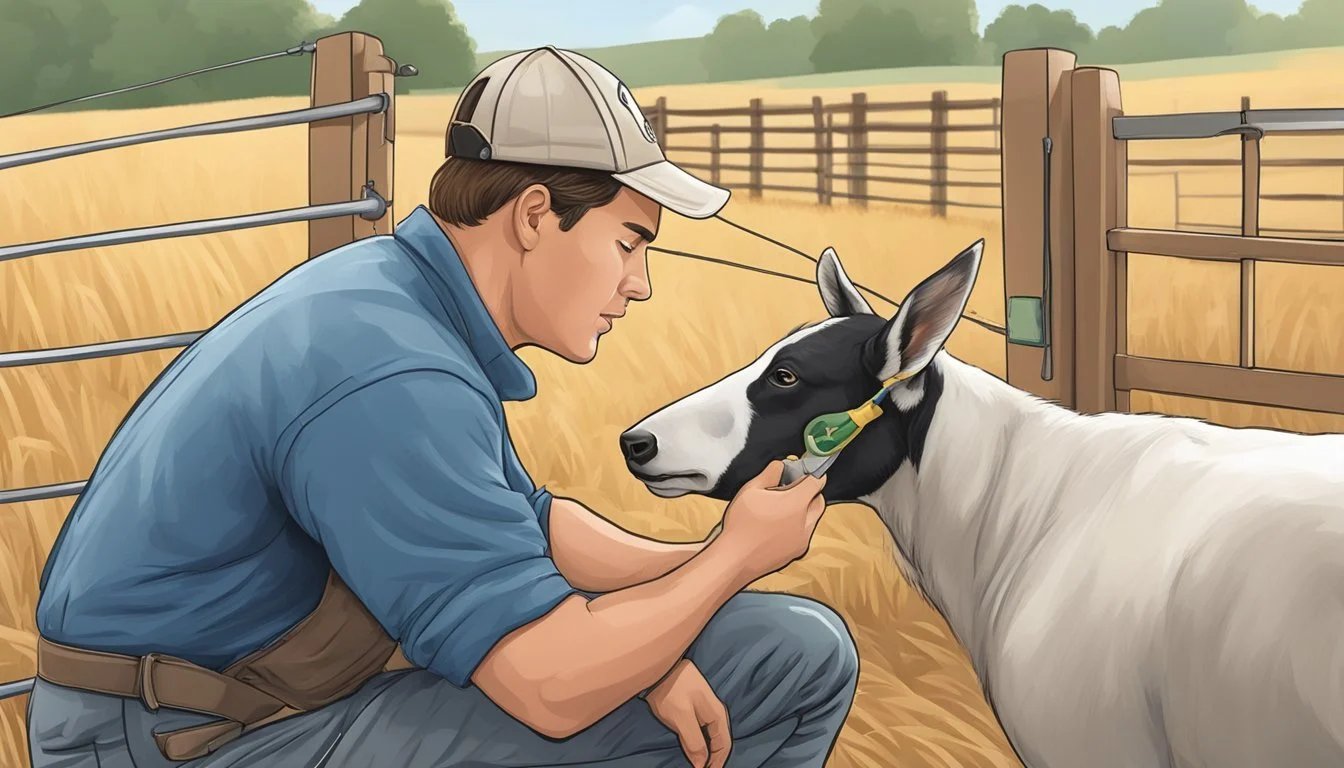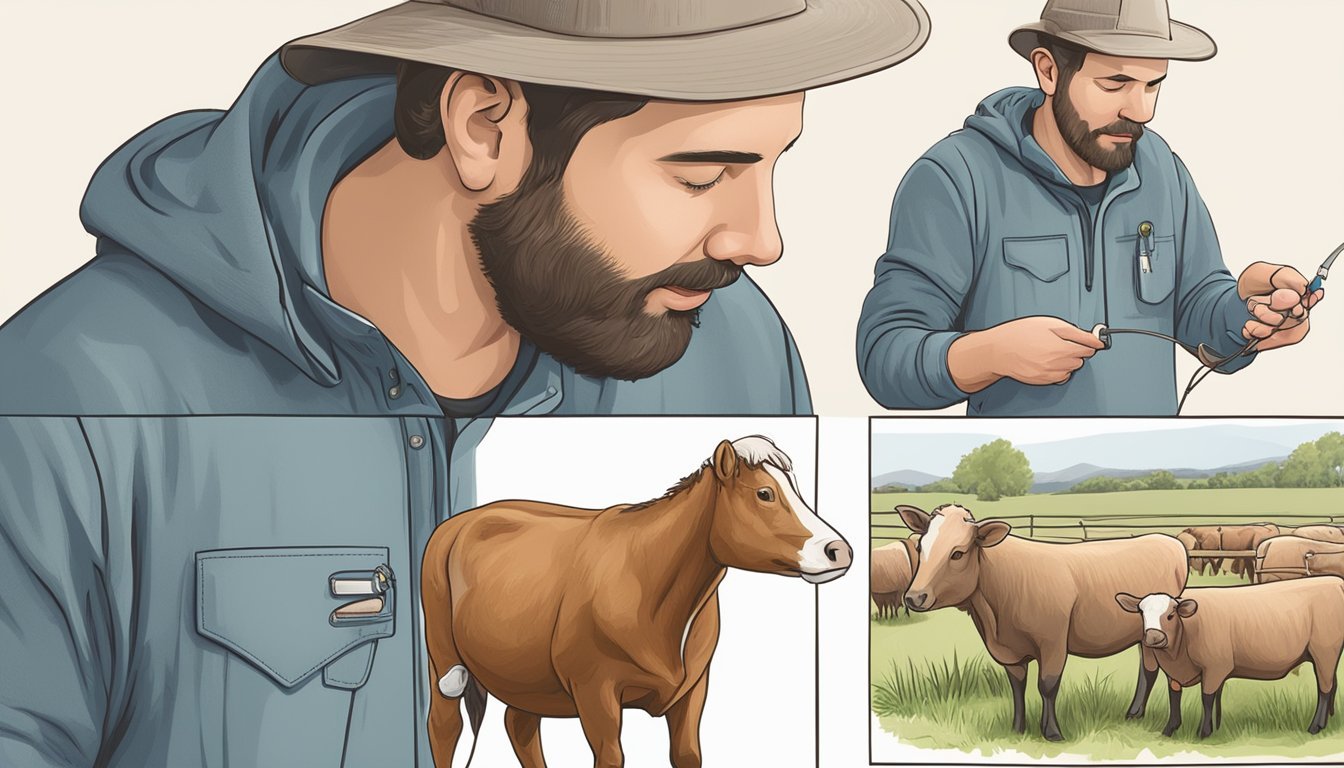The Ultimate Guide to Using an Ear Tag Removal Tool for Efficient Livestock Management
Livestock identification is a critical component of modern animal husbandry, ensuring the ability to track an animal's health records, breeding, and location. Ear tagging is the most common method employed for this purpose, whereby animals are fitted with small, usually plastic or metal, tags that carry unique identification numbers. However, over the lifespan of livestock, there may be occasions when these tags need to be removed, either for replacement, during medical treatment, or prior to processing. The removal must be done safely and efficiently to minimize stress on the animal and to prevent potential harm.
An ear tag removal tool is designed specifically for this task. It resembles pliers and is engineered to snip or unclasp the tag with minimal effort. Removing an ear tag requires a firm but gentle approach to avoid damaging the sensitive ear tissue. Handlers must grip the tag correctly, following the contours of the tool to twist or clip it without causing the animal discomfort. Following the removal, the site should be treated with a disinfectant to prevent infection and promote healing.
A thorough understanding of ear tag removal is crucial for anyone involved in livestock management. Selecting the right tool and employing proper technique are key factors in executing the task successfully. Being equipped with knowledge about safe removal practices helps maintain the integrity of the livestock identification system and ensures the welfare of the animals.
Understanding Livestock Identification
Livestock identification is a systematic approach to tracking animals, crucial for managing herds and ensuring traceability from farm to consumer. This process has evolved substantially, accommodating various methods to meet industry demands for recording and traceability.
History and Evolution of Animal Tagging
The history of animal tagging dates back to ancient times when livestock owners used branding to mark their animals for identification. Over the years, this practice has advanced from hot-iron branding to more sophisticated techniques like ear tagging and electronic identification. In the modern age, ear tags have become a common sight, usually made of plastic or metal and clipped onto the animal's ear. They carry unique identifiers to distinguish individual animals within a herd.
Importance of Accurate Records and Traceability
Maintaining accurate records is fundamental in livestock management. It allows for effective traceability, which is the ability to track an animal's history, on-farm management, and location. Traceability is vital for various reasons: it aids in controlling disease outbreaks, supports food safety protocols, and ensures authenticity in breeding programs. Tags, whether physical or electronic, are tools that store critical data, making record-keeping more precise and accessible.
Different Methods: Branding, Tattooing, and Microchipping
Livestock identification has several methods, each with its peculiarities:
Branding: Often used for cattle, branding involves marking animals with a hot or cold iron to create a permanent symbol. Although it's falling out of favor due to welfare concerns, it's still used for its permanence and simplicity.
Tattooing: This method involves inserting ink into the animal's ear or other parts to create a lasting identifier. It's more common in pigs and small ruminants, where ear tags may not be suitable.
Microchipping: A modern approach where a chip is implanted beneath the animal’s skin. Microchipping has gained popularity due to its reliability and difficulty to tamper with. It's widely used in pets and is gaining traction in the livestock industry.
Each method serves the purpose of identifying animals and keeping records, but they vary in durability, ease of application, and visibility. The choice of method depends on species, regulatory requirements, and the management purpose at hand.
The Ear Tag Technology
Ear tags serve a crucial role in livestock management by providing a unique identification number for each animal, which is essential for tracking health, genetics, and ownership. This technology has evolved to include various types of tags with advanced identification capabilities like electronic and radio frequency identification.
Types of Ear Tags
Livestock ear tags come in different materials, such as plastic or metal, and are chosen based on the animal and application needs. The most common ear tags are:
Standard tags: Primary for visual identification; they may include the animal's sex, year of birth, and herd number.
Electronic Identification (EID) Tags: These contain a microchip and work in conjunction with a reader.
Electronic Identification (EID) Tags
EID tags provide a step up from traditional methods by embedding an electronic chip in the tag. They facilitate:
Quick and accurate identification.
Storage of a unique identification number for each animal.
Radio Frequency Identification (RFID) Tags
RFID tags are a type of EID system that use radio waves to transfer data. These tags:
Are read by scanners from a distance.
Are pivotal in maintaining databases for tracking livestock movement and health.
Safe Application of Ear Tags
Applying ear tags to livestock is a basic yet essential task in animal identification that requires meticulousness to ensure the safety of the animals. Proper procedures, tools, and hygiene practices are critical to avoid complications.
Choosing the Right Applicator
One must select an appropriate applicator for the specific type of ear tag being used. The industry offers manual and automatic applicators, with designs tailored to the tag's shape and size. For example, a study-grade plastic applicator is preferred for visual tags, while electronic identification (EID) tags might require a more robust tool.
Types of Applicators:
Manual Applicators: Require physical squeezing to insert the tag.
Automatic Applicators: Spring-loaded for easier insertion.
Hygiene and Disinfection Procedures
Maintaining hygiene is non-negotiable during the ear tagging process. Disinfectants should be used to clean the applicator and the tags before and after each application. The farmer should don gloves and ensure that the animal's ear is clean to prevent the introduction of pathogens.
Disinfection Checklist:
Cleaning the Applicator: Use an approved disinfectant before and after tagging.
Preparing the Tag: Disinfect tags thoroughly to eliminate contaminates.
Animal's Ear: Wipe the application area with a disinfectant.
Safety Measures to Prevent Infections
To prevent infections during the tagging process, several safety measures should be followed diligently. The handler should place the tag in the correct position on the ear, away from edges where it could snag and pull out. One should avoid thick cartilage closer to the head as improper placement can cause discomfort and increase the risk of infection.
Placement and Technique:
Proper Positioning: Insert visual tags in the center and EID tags two-thirds from the ear edge.
Consideration of Cartilage: Avoid areas with thicker cartilage for comfort and retention.
Managing Livestock Identification
Effective management of livestock identification is crucial for tracking and monitoring, implementing herd management strategies, and ensuring precise record-keeping and accountability.
Tracking and Monitoring Livestock
The use of ear tags provides a systematic approach for tracking, allowing for efficient monitoring of livestock movements and health. Ear tags can be visual or incorporate RFID technology for more sophisticated tracking needs. Each tag, often made of durable plastic or metal, carries a unique identification number that simplifies the tracking process across various locations and stages of the livestock's life.
Herd Management Strategies
Herd management leverages identification data to optimize the overall management strategies including breeding, feeding, and veterinary care. Livestock producers can use identification numbers to:
Match offspring to mothers
Monitor breeding cycles
Schedule vaccinations and treatments
This facilitates targeted herd improvements and aids in making informed management decisions.
Record-Keeping and Accountability
Proper identification plays a pivotal role in record-keeping, ensuring that all information logged is accurate and traceable to specific animals. This accountability is vital for:
Compliance with regulatory requirements
Traceability in the event of disease outbreak
Accessing detailed histories for individual animals
Meticulous records support transparent operations and can significantly enhance the credibility of livestock businesses.
Animal Welfare and Ear Tagging
When implementing ear tagging for livestock identification, it's essential to prioritize animal welfare by managing pain, monitoring long-term health, and ensuring effective disease control.
Reducing Pain and Discomfort During Tagging
To minimize pain and discomfort during the ear tagging process, it is critical to select the appropriate location on the ear for tag placement. The middle one-third of the ear is ideal because this area has sufficient cartilage to support the tag without causing undue pain. It's also essential to avoid the thinner tip, which is prone to tearing and the thicker base, which may result in a painful pinch to the animal. Prior to tagging, one should always clean the ear and the tagging instrument to prevent infection.
Proper Tag Placement: Middle one-third of the ear
Tools Maintenance: Disinfect ear and instrument before use
Culling and Disease Control
Ear tagging plays an important role in managing culling and disease control within livestock populations. Unique identification numbers on ear tags allow for the tracking of an animal's health, facilitating the early detection of diseases and reducing the spread within the herd. Additionally, ear tagging contributes to making informed decisions about culling by providing essential data on an animal’s health and productivity history.
Health Tracking: Facilitates disease detection and control
Culling Decisions: Informs based on health and productivity data
Long-Term Health Monitoring
Regular monitoring of tagged livestock is vital for ensuring their long-term health. Tags that are properly applied and remain intact make routine health checks more efficient, supporting effective monitoring and welfare assessments. Owners should periodically check the integrity of ear tags and the condition of the tagged area to detect any issues promptly.
Routine Checks: Ensure tags are intact and the ear is healthy
Welfare Assessments: Keep track of health over the animal's lifespan
Challenges and Solutions
In managing livestock, producers often face challenges related to tag loss, disease prevention, and optimizing identification for efficiency. These issues require practical solutions to maintain herd health and accurate tracking.
Dealing with Ear Tag Loss and Damage
Tag loss or damage can occur due to environmental factors or the animal's activity. To mitigate tag loss, it's crucial for the livestock producer to:
Choose high-quality tags that are designed to withstand the rigors of the animal's environment and behavior.
Regularly inspect tags for signs of wear or damage, and replace them promptly to prevent loss of identification.
In instances of tag damage or necessary removal, using the right tool is essential. A tag removal tool should cleanly and safely remove tags without causing injury to the animal. The producer should:
Use tag removal pliers to grip and release the tag’s mechanism correctly.
Ensure the tool is always in good working order to facilitate a smooth removal process.
Preventing Disease Outbreaks
The removal and application of ear tags present a risk for infection, which can lead to disease outbreaks if not managed properly. Producers should:
Disinfect the tag and removal tool before and after use to prevent the transmission of pathogens.
Apply a disinfectant to the animal's ear post-removal to prevent infection and promote healing.
By maintaining stringent hygiene practices, producers can significantly reduce the risk of disease outbreaks related to ear tag management.
Optimizing Identification for Large-Scale Operations
For large-scale operations, effective management of ear tagging can become complex. Producers should:
Implement a systematic approach for applying and monitoring tags to streamline the process across large herds.
Consider utilizing automated identification systems such as RFID tags, which can improve efficiency and data accuracy.
Adopting technologies like satellite-linked tags may also enhance tracking without requiring on-farm infrastructure, assisting in meeting industry systems like the National Livestock Identification System (NLIS) requirements. These solutions help large-scale operations manage identification tasks more effectively.
Comparative Analysis of Identification Methods
Livestock identification is critical for management, health tracking, and regulatory compliance. This section will explore the benefits and drawbacks of ear tags, contrast them with other identification types, and discuss the financial aspects.
Advantages and Disadvantages of Ear Tags
Advantages of Ear Tags:
Quick to Implement: Ear tagging can be rapidly applied to livestock.
Low Cost: Compared to other methods, they are relatively inexpensive.
Wide Variety: Available in different sizes, colors, and may include barcodes or alphanumeric codes for easy reading.
Disadvantages of Ear Tags:
Loss or Damage: Tags can be lost or damaged, leading to identification issues.
Infection Risk: Improper application or unsterilized tools can cause infections.
Ear Tags Versus Visual and Electronic Tags
Visual Tags:
Often less technologically advanced than electronic tags.
Rely on physical characteristics and can be difficult to read from a distance.
Electronic Identification (EID) Tags:
Store more data than visual tags and can be scanned electronically.
Provide a higher level of traceability and data management capabilities.
Generally have a higher initial cost than visual tags.
Cost-Benefit Analysis of Identification Tools
When considering cost-effectiveness, one must assess both the initial investment and ongoing maintenance of the identification method.
Initial Costs:
Ear Tags: Low initial cost per unit and minimal equipment needed.
Visual and EID Tags: Higher purchase price, with EID readers incurring additional costs.
Maintenance Costs:
Ear Tags: May incur costs associated with replacement due to loss or damage.
EID Tags: Lower maintenance costs long-term as they are more durable and can be integrated into management systems for efficient data utilization.
Best Practices for Livestock Owners
Effective livestock management hinges on the proper use of ear tag removal tools and up-to-date identification practices. Livestock owners are responsible for ensuring that the transition from one tag to another, as well as the maintenance of existing tags, is performed efficiently and harmlessly.
Consulting a Veterinarian for Best Results
Owners should consult with a veterinarian before and after introducing ear tag practices. A veterinarian can provide:
Insights on the most humane and effective tagging locations on the ear.
Advice on post-tagging care to prevent infections or complications.
Updating Identification Information Regularly
Identification tags must contain accurate, up-to-date information to be effective. Owners need to:
Routinely check and update ear tags, ensuring they reflect current data.
Immediately amend records if an animal's identification tag is lost or replaced.
Investing in Quality Tagging Equipment
Choosing and investing in quality equipment is pivotal for livestock owners. It assures:
Durability: Tags that resist environmental wear and tear.
Readability: Tags that remain legible for efficient management and tracking.
When it comes to tagging equipment, livestock owners must prioritize tools that are easy to use, clean, and aligned with welfare standards.
Selecting Ear Tag Removal Tools
Selecting the right ear tag removal tool is essential for the welfare of the livestock and the ease of the process. The tool should comfortably detach ear tags without causing harm to the animals.
Criteria for Choosing the Best Tool
Durability: The ideal ear tag removal tool should be made from high-quality materials that can withstand repeated use and resist corrosion.
Design: A tool designed with a hook blade allows for safer interaction, as it can slip easily between the ear tag and the animal's ear without causing injury.
Comfort and Safety: The handle should be ergonomic, providing a comfortable grip for the user, while also ensuring safety for both user and animal.
Compatibility: Make sure the tool is compatible with the types of ear tags being used, whether they are metal, plastic, or RFID tags.
Step-by-Step Guide to Ear Tag Removal
Prepare the Tools: Ensure the ear tag removal tool is clean and disinfected to prevent infection.
Restrain the Animal: The animal should be restrained to minimize movement for safety and precision during tag removal.
Positioning the Tool: Using the ear tag removal tool, position the hook blade between the base of the male tag component and the animal's ear.
Detaching the Tag: With a firm grip, use the tool to twist or cut the tag as per the specific instructions provided by the tool's manufacturer, being cautious not to injure the animal's ear.
Clean the Area: After tag removal, cleanse the ear area with a disinfectant to prevent any potential infection.
Conclusion
Utilizing an ear tag removal tool effectively concludes the process of livestock identification, ensuring animal welfare and maintenance of reliable records. The utilization of ear tag removal tools must be done with precision to prevent harm to the livestock.
Key takeaways include:
Safety First: Always prioritize the animal's well-being by using the tool as instructed, and cleaning the wound post-removal to prevent infection.
Proper Technique: A firm grip and correct twisting or cutting action are imperative for a smooth tag removal experience.
Disinfection: Post-removal, disinfecting the ear area is a crucial step, utilizing a recommended antiseptic.
A comprehensive guide on ear tag removal tools underlines its pertinence in livestock management. This tool supports reliable identification by facilitating the process of tag replacement or removal as required. The implications for traceability and health management within herds are considerable, making the correct usage of ear tag removal tools a non-negotiable skill for livestock handlers.
Providing the livestock with an ID through ear tagging ensures individual animals are effortlessly recognized and managed. The methodical removal of these tags reinforces the integrity of this system, maintaining an unbroken chain of identification from birth to sale.
In conclusion, livestock handlers equipped with the knowledge of how to use an ear tag removal tool effectively participate in the vital role of advancing animal husbandry practices. This guide strives to extend the understanding necessary to optimize identification accuracy and uphold the standard of care within the livestock industry.







